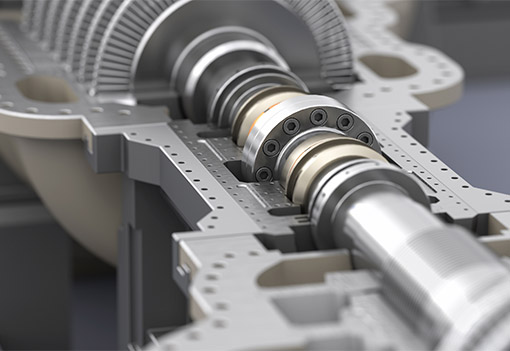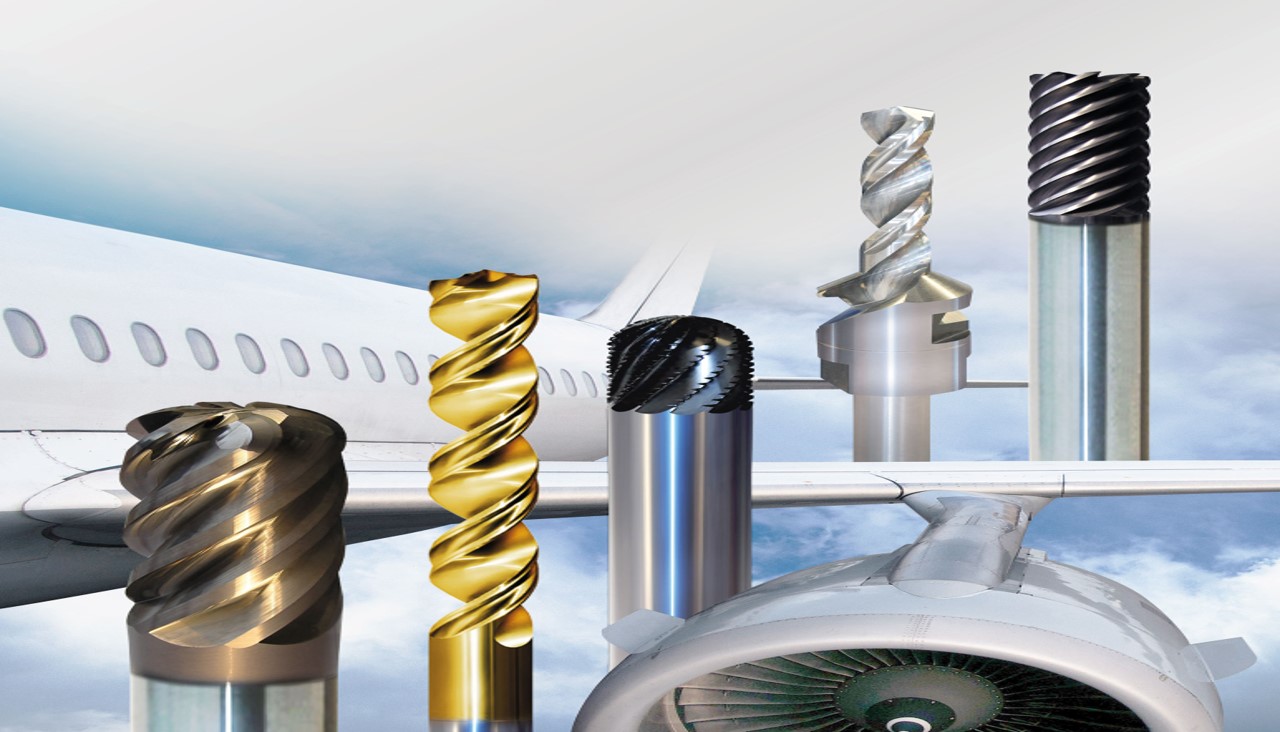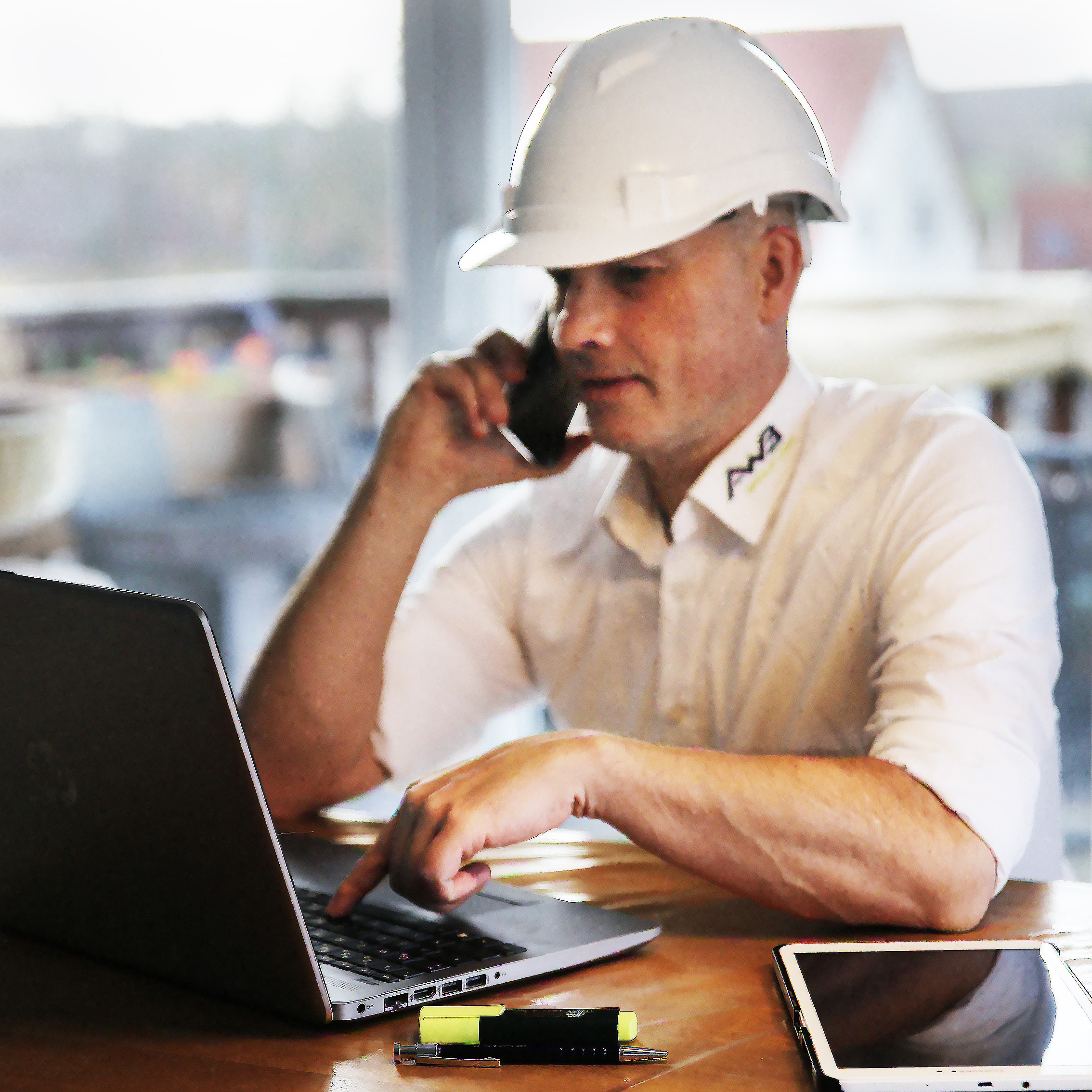Cost-efficiency in the processing of aircraft components using iron aluminides
Research project of the AWB Group on the use of new alloys using iron aluminides in the aviation environment and in the construction of high-performance turbines
Will nickel-based alloys and titanium soon be replaced in aircraft construction? Are iron aluminides the new competing materials?
In aerospace component manufacturing, milling is an important finishing process. Iron aluminides are considered difficult materials to cut. Therefore, the tool wear mechanisms and phenomena that occur are the main problems in machining such alloys. These issues have not yet been addressed in depth by the existing knowledge base. In this paper, cast iron aluminide samples were machined with ball nose cutters in order to analyse the occurring tool wear and the influence of different tool properties.
Complex initial situation in the aerospace industry
The aerospace industry represents an international growth, characterised by the prospect of 5% growth per year. Over the next 20 years, passenger air traffic is expected to increase to almost 19,000 billion passenger kilometres per year, more than double the current figure. As a result, nearly 40,000 new aircraft deliveries are forecast worldwide by 2037. In this context, fuel consumption is now the driving force in civil aircraft design due to greenhouse gas emissions and operating costs. Reduced fuel consumption can be achieved through higher engine efficiency, aerodynamic design as well as lightweight construction. In addition to structural and system lightweight design, lightweight construction with non-ferrous high-performance materials such as titanium and nickel-based alloys is one approach due to their mechanical and thermal properties. At the same time, alloys of iron aluminides (FeAl) can have similar and advantageous mechanical and thermal properties. They are characterised by comparatively low density, excellent corrosion resistance and high wear resistance. In addition, certain FeAl alloys show high heat resistance. The main alloying elements iron and aluminium are one of the most common in the earth’s crust, which is why FeAl alloys offer a significant economic advantage over other high-performance materials. When it comes to manufacturing and processing, FeAl alloys meet the basic requirements. Their suitability for existing plant construction and the possibility of near-net-shape production enable excellent and efficient processability. Iron aluminides thus have the potential to replace established, high-priced non-ferrous alloys for components in turbomachinery such as turbine blades.
Challenge to the best alloy: heat-resistant, lightweight and attractively priced
An application in gas turbines requires various advantageous material properties for operating temperatures above 400 °C and for long operating times. High tensile strength and elongation as well as a low creep rate are essential properties. In recent years, some alloys of iron aluminides with high strengths at temperatures up to 800 °C and acceptable ductility have been developed. Due to continuous coherent precipitation even during prolonged high-temperature loading, their strength properties do not decrease decisively. A promising representative of these alloys is currently Fe25Al1.5Ta[at.%], as it is already material-optimised, so no further metallurgical improvements are to be expected.
However, flow-relevant surfaces such as those of turbine blades in turbomachinery are subject to high accuracy requirements, which is why machining of surfaces for such components is currently essential. However, the favourable properties of iron aluminides pose a challenge for the machining processes. The biggest challenge is the occurring high tool wear. At low cutting speeds, it is mainly caused by mechanical tool loading and bonding processes. At higher cutting speeds, the main wear mechanisms are tribochemical diffusion processes leading to a rapidly progressive loss of cutting material. The resulting cutting forces are up to three times higher than during medium carbon steel machining and the specific cutting forces are comparable to hard machining. A major reason for these high forces is the material-specific hardening and deformation behaviour. At low temperatures, they depend on the degree of deformation and at temperatures above 550 °C, there is a dependence on the deformation rate. The low thermal conductivity of iron aluminide alloys leads to high temperatures in the contact zone, which continue in the tool. The high resulting temperatures and cutting forces, combined with a concentration difference of the elements involved and a chemical potential, lead to atomic interactions between material and cutting material. For example, the carbon of tungsten carbide concentrates in the direction of the chip during the process. Additional iron and aluminium diffuse in the cutting material and lead to different chemical products and weaken the cutting edge. To reduce such interactions, different tool coatings are suitable. Due to this high tool wear, economic machining of FeAl alloys is currently not possible.

Machining of turbine blades in the focus
The AIF-funded project “GeWeFeAl” focuses on the production of demonstrators in the form of turbine blades in turbomachinery made of Fe25Al1.5Ta[at.-%]. The process sequence within the project consists of near-net-shape casting followed by final machining. On the one hand, the project aims at analysing and characterising the casting behaviour of iron aluminide alloy. On the other hand, it is about the development of suitable milling tools for economic machining. Therefore, the present study focuses on the experimental investigation of the machinability of the FeAl alloy used by comparing different tool properties and their influence on tool wear.
Experimental structure of the research project – The art of milling at physical limits
AWB Group – the first and only hogger capable of machining iron aluminides

Results:
The summary of the tool’s geometry has a significant influence on flank wear, but there is no explicit correlation between low cutting forces and low flank wear.
Overall, the microscope geometry affects the flank wear, but the cutting forces show an inverse result compared to the tool wear.
The influence of the carbide substrate on tool wear is visible. The cutting forces are also different, but there is no obvious explicit correlation between lower cutting forces and less flank wear.
The results of this test series show that the tool coating has a significant influence on flank wear when milling the iron aluminides. When comparing the measured cutting forces, there are differences between the different coatings, but the lowest forces do not correlate with the lowest flank wear at the applied cutting length.

Conclusion: alloy – tool – process combination
The present study confirms that iron aluminides are difficult-to-machine materials due to high tool wear at low milling parameters, e.g. when milling other high-performance materials. The dimension and shape of tool wear when milling iron aluminides is basically dependent on the cutting material and the tool coating. The tool geometry influences the wear behaviour and the cutting forces that occur. The use of micro-geometries strengthens the cutting edge and leads to more uniform tool wear.
Contact form
Please submit your request to AWB
We will be happy to advise you.
Also on site at your company.


